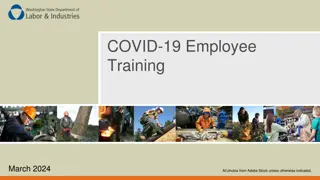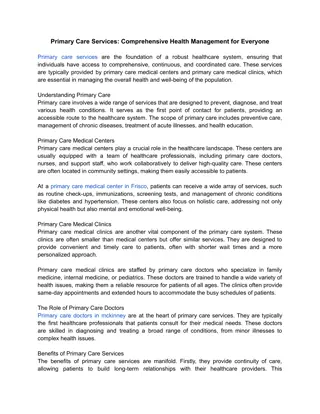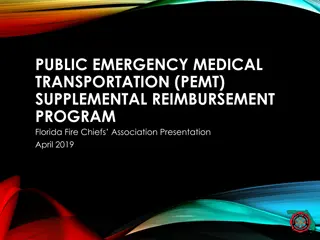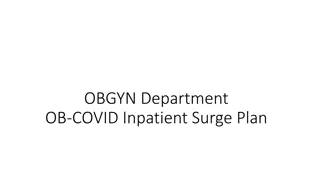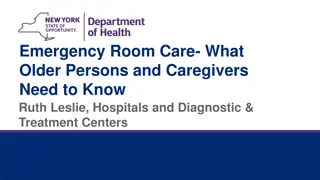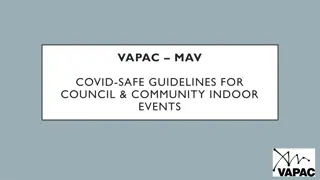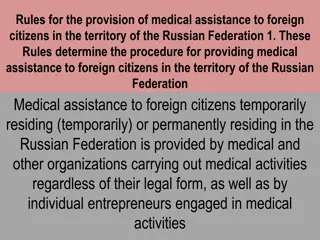Ensuring Safe and Effective Care in Emergency Medical Services during COVID-19
Understanding the importance of quality of care in EMTs during the COVID-19 response, implementing tools for improving care quality, and ensuring safe, timely, effective, and people-centered care delivery. The program highlights key considerations for managing EMT staff during pandemic operations, emphasizing the need for efficient and equitable care that responds to individual preferences and values. Addressing the global concern of unsafe care, it sheds light on the alarming statistics of patient harm and deaths due to substandard healthcare practices, stressing the necessity to prioritize safe care provision.
Download Presentation

Please find below an Image/Link to download the presentation.
The content on the website is provided AS IS for your information and personal use only. It may not be sold, licensed, or shared on other websites without obtaining consent from the author.If you encounter any issues during the download, it is possible that the publisher has removed the file from their server.
You are allowed to download the files provided on this website for personal or commercial use, subject to the condition that they are used lawfully. All files are the property of their respective owners.
The content on the website is provided AS IS for your information and personal use only. It may not be sold, licensed, or shared on other websites without obtaining consent from the author.
E N D
Presentation Transcript
EMT Just In Time Training Modules, COVID-19 Quality Improvement and Monitoring Tools HEALTH EMERGENCIES HEALTH EMERGENCIES programme programme
Session outcomes Recognise the importance of quality of care mechanisms as applied to EMTs in the COVID-19 response Apply basic tools for promoting improvements in the quality of care provided Describe key considerations for sending and receiving EMT staff during COVID-19 operations HEALTH EMERGENCIES programme
Quality Care : The First EMT Guiding Principle The EMTs provide safe, timely, effective, efficient, equitable and people centred care HEALTH EMERGENCIES programme
What does it mean? Care provided by EMTs should be... Safe Timely Effective Avoiding harm to people for whom care is intended, Reducing waiting times and sometimes harmful delays for both those who receive and those who give care Providing evidence-based healthcare services to those who need them Efficient Equitable People-centred Maximizing the benefit of available resources and avoiding waste Providing care that does not vary in quality on account of a person characteristics, location, religion, socioeconomic status, political affiliation, linguistics Providing care that responds to individuals preferences, needs and values HEALTH EMERGENCIES programme
THE PROBLEM OF UNSAFE CARE AND WHY IT MATTERS FOR EMTS HEALTH EMERGENCIES programme
Safe Care : Avoiding Harm to People for Whom Care is Intended The focus is on any UNNECESSARY physical, psychological or social harm resulting from healthcare provision AND NOT the patient s underlying disease or injury HEALTH EMERGENCIES programme
Safe Care : a Global Health Concern 1 in 10 patients suffer harm whilst receiving hospital care Top 10 cause of death and disability worlwide 134 million adverse events and 2.6 million deaths due to unsafe care in LMIC every year 4 in 10 patient suffer harm in primary/ambulatory care settings https://www.who.int/features/factfiles/patient_safety/en/ HEALTH EMERGENCIES programme
Wall Chart Activity 1.Draw a stick figure 2. Discuss as a group the forms of harm that can happen while caring for COVID-19 patients. 3.Write/draw each harm on a separate card Remember: harm can be physical , psychological or social HEALTH EMERGENCIES programme
WHAT CAN EMT STAFF DO TO IMPROVE QUALITY CARE FOR COVID-19 PATIENTS? HEALTH EMERGENCIES programme
Brainstorming Activity Select one harm from the wall chart As a group, discuss ideas to fix it TIP: - Avoid ideas that are more of the same - Focus on ideas that change the way the work/process is performed, have a lasting impact and produce visible results HEALTH EMERGENCIES programme
PDSA Cycles are a Tool for Learning and Action Commonly used to: 1. Build knoweldge about a change 2. Test a change 3. Implement a change All improvement requires change but not every change is na improvement (Langely G et al. 2009) CAUTION: Implementing changes before testing it might makes things worse... hence, using PDSA cycles! HEALTH EMERGENCIES programme
The Anatomy of a PDSA Cycle ACT PLAN STUDY DO HEALTH EMERGENCIES programme
The Anatomy of a PDSA Cycle What idea are we testing? What do we think will happen it? How will the test be conducted? (Who, What, When, Where, How?) What data do we need to collect? ACT PLAN STUDY DO HEALTH EMERGENCIES programme
The Anatomy of a PDSA Cycle ACT PLAN Conduct the test Did something unexpected happen? STUDY DO HEALTH EMERGENCIES programme
The Anatomy of a PDSA Cycle ACT PLAN What happened? Compare the test results with your predictions. Summarize the learning STUDY DO HEALTH EMERGENCIES programme
The Anatomy of a PDSA Cycle What our actions will be based on what we have learned :adopt, abandon, adapt or increase scale/change scope of test? What is our next PDSA cycle? ACT PLAN STUDY DO HEALTH EMERGENCIES programme
Multiple PDSA Cycles to Build Sequential Knoweldge about a Change Changes that result in improvement ACT PLAN STUDY DO Implementation of change ACT PLAN STUDY DO Wide scale tests of change ACT PLAN STUDY DO ACT PLAN Follow up tests STUDY DO Hunches Theories Ideas Very small scale tests Langley et al. 2009 HEALTH EMERGENCIES programme
A COVID-19 Example of PDSA What change idea are we testing? Sheet of paper at triage room with visual display of steps to follow when triaging a suspect COVID- 19 patient. ACT PLAN What do we think it will happen if we try this idea? Triage will be faster and more reliable STUDY DO What is our plan? Paul will write down the step by step, nurse Marie will test it tomorrow with her first patient What data are we collecting? Minutes triage takes + Marie s impressions HEALTH EMERGENCIES programme
A COVID-19 Example of PDSA ACT PLAN Conduct the test. Did something unexpected happen? Test went as planned Nothing unexpected happened. STUDY DO HEALTH EMERGENCIES programme
A COVID-19 Example of PDSA What happened? Compare results with initial prediction Triages took 75 seconds more Font size was small Paper was too high on the wall Marie felt confident in having a reminder there Initial prediction was not completely accurate ACT PLAN STUDY DO HEALTH EMERGENCIES programme
A COVID-19 Example of PDSA What our actions will be based on what we have learned? Adapt the change (increase font size and make cleaner version) What is our next PDSA cycle? Marie will test it again this afternoon with 2 patients. ACT PLAN STUDY DO HEALTH EMERGENCIES programme
A COVID-19 Example of PDSA ACT PLAN STUDY DO Implementation of the visual display ACT PLAN STUDY DO ACT PLAN Wide scale test with 5 nurses during an entire shift STUDY DO ACT PLAN STUDY DO Follow up test with 2 nurses and 3 patients each on night shift ACT PLAN STUDY DO Follow up test with 2 nurses and 3 patients each on day shift Test display with 1 patient and 1 nurse on day shift HEALTH EMERGENCIES programme
Checklist for Organizing Deployments of Staff in the Context of COVID-19 Practical tool to organize deployments of staff Aim: to reduce errors and increase staff safety and wellbeing Target audience: EMTs and host facilities Structure :5 topic areas and 24 items Documentation Training Team safety, security & wellbeing Key processes and protocol Language Set of measures related to staff HEALTH EMERGENCIES programme
Summary Quality of care mattera especially in the context of COVID-19 response Various types of physical, pysochological and social harm can happen during care for COVID-19 patients. Majority are preventable. Test changes before implementation. PDSA cycles are a useful tool for that. Sending and receving EMT as surge staff should be carefully planned to minimize errors and increase safety of staff. The checklist for organizing deployments can support such planning. HEALTH EMERGENCIES programme
Thank you Any questions? For more http://extranet.who.int/emt/ EMTeams@who.int HEALTH EMERGENCIES programme




